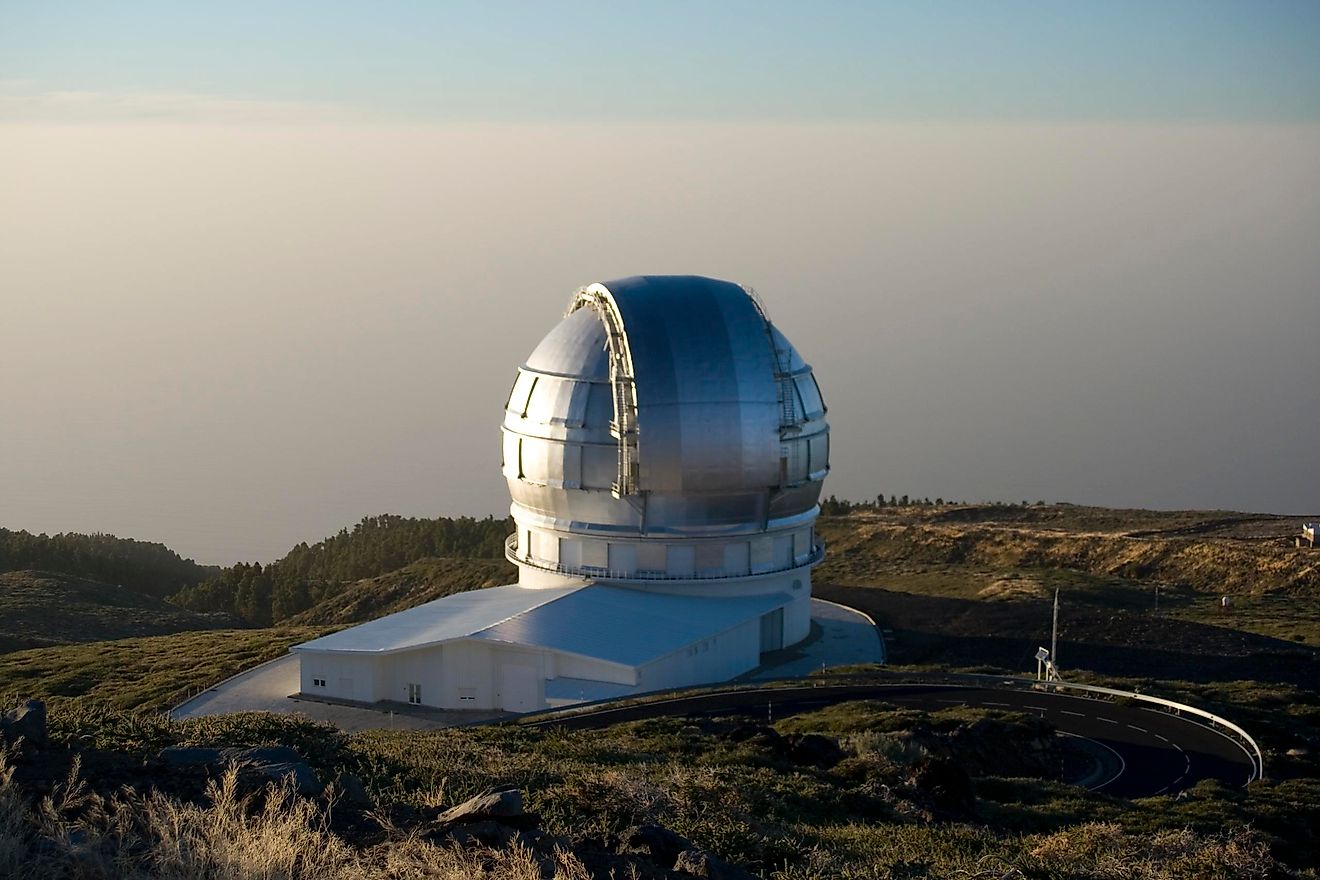The Biggest Telescopes In The World

Telescopes help to bring stars and galaxies closer to humans. This invention observes visible light (a type of electromagnetic radiation) from far off objects and uses that light to create an image. This function is precisely what makes them so useful to scientists and astronomers. Galileo is most commonly associated with the first telescopes though he is not the inventor. He was, however, the first person to use a telescope to view the night sky which is how he discovered the Milky Way. Several kinds telescopes exist and are used to observe different types of electromagnetic radiation. Optical, Radio, and X-ray telescopes (to name a few) have all been beneficial to science. This article inspects some of the biggest optical telescopes on Earth.
The Biggest Telescopes
The Gran Telescopio Canarias
The Gran Telescopio Canarias is by far the largest telescope on earth and measures 34 feet (or 409 inches) across! Its home is in the Canary Islands of Spain. The design and development of this telescope took more than 1,000 people from over 100 companies more than a decade to complete. Major contributors were the Instituto de Astrofisica de Canarías, the University of Florida, and the Universidad Nacional Autónoma de México. King Juan Carlos I of Spain officially inaugurated the telescope on July 24, 2009.
Keck 1 and Keck 2
Next on the list of big telescopes is the Keck 1 and Keck 2 telescope located Mauna Kea Observatory in Hawaii, US. These telescopes, inaugurated in 1993 and 1996, are both 394 inches wide, or 32.8 feet. University of California and Lawrence Berkeley Labs began designing in 1977, but it was Howard B. Keck who donated the $70 million required for construction. Keck 1 construction began in 1985. Popularity grew, and the institutions received more donations which allowed for the construction of Keck 2. The University of California, Caltech, and NASA form a partnership that accepts research proposals and allocates telescope use time. The California Association for Research in Astronomy manages the observatory.
South African Large Telescope (SALT )
After the Keck 1 and 2 telescopes, the next largest telescope is the SALT. The SALT (South African Large Telescope) is located on the Northern Cape of South Africa at the South African Astronomical Observatory. Though not the largest in the world, it is the largest in the southern hemisphere and measures 30.16 feet across (362 inches). Due to its location, the SALT can capture images that its northern hemisphere fellows cannot. This telescope represents an international effort and receives funding from Germany, Poland, the United Kingdom, New Zealand, India, South Africa, and the US.
Large Binocular Telescope (LBT)
Number 4 on the list is the Large Binocular Telescope (LBT). This 330-inch instrument helps astronomers and other researchers view the night sky from the Mount Graham Observatory in Arizona, US. Unfortunately, its location was the cause of heated debate when the San Carlos Apache Tribe contested its use on Mount Graham. The natives revere the mountains as a sacred site. Environmentalists were also concerned about the destruction of the Mount Graham Red Squirrel habitat. The US Congress passed an act permitting its destruction. The telescope was a joint effort among Italian Istituto Nazionale di Astrofisica, University of Arizona, University of Notre Dame, University of Missouri, University of Virginia, the German Max Planck Institute for Astronomy, and many others.
Subaru
The fifth largest telescope in the world is the Subaru, 323 inches. This instrument is located in Hawaii, like the Keck 1 and Keck 2 telescopes, at the Mauna Kea Observatory. This was initiated by an engineering work group from the University of Tokyo.
Telescopes In Chile
Interestingly, the remaining largest telescopes of the world are all located in Chile in South America. This is because of the Atacama desert which provide clear skies and dry air. The telescopes located at the Paranal Observatory are all 323 inches in diameter (almost 30 feet) and include the: Antu, Kueyen, Melipal, and Yepun. Finally, last on the list at 318 inches is the Gemini South telescope. The Gemini is located at the Cerro Tololo Inter-American Observatory.
Future Plans
Plans for future telescopes will have even more viewing potential than those of the present-day hopefully these instruments will catch a glimpse into the birth of a universe. One telescope planned for 2020 is the Giant Magellan Telescope, which will measure 80 feet in diameter and promptly take the place of the largest telescope on earth. This telescope will also be located in Chile and is expected to provide a direct view of the planets in other solar systems, a first for astronomy.
The Biggest Telescopes In The World
| Rank | Telescope, Location, Date Built | Aperture Size |
|---|---|---|
| 1 | Gran Telescopio Canarias, Canary Islands, Spain, 2009 | 409 inches |
| 2 | Keck 1 and Keck 2, Mauna Kea Observatory, Hawaii, U.S.A., 1993 and 1996 (respectively) | 394 inches each |
| 3 | SALT, South African Astronomical Observatory, Northern Cape, South Africa, 2005 | 362 inches |
| 4 | LBT, Mount Graham Observatory, Arizona, U.S.A., 2004 | 330 inches |
| 5 | Subaru, Mauna Kea Observatory, Hawaii, U.S.A., 1999 | 323 inches |
| 6 | Antu, Paranal Observatory, Chile, 1998 | 323 inches |
| 7 | Kueyen, Paranal Observatory, Chile, 1999 | 323 inches |
| 8 | Melipal, Paranal Observatory, Chile, 2000 | 323 inches |
| 9 | Yepun, Paranal Observatory, Chile, 2001 | 323 inches |
| 10 | Gemini South, Cerro Tololo Inter-American Observatory, Chile, 2001 | 318 inches |











